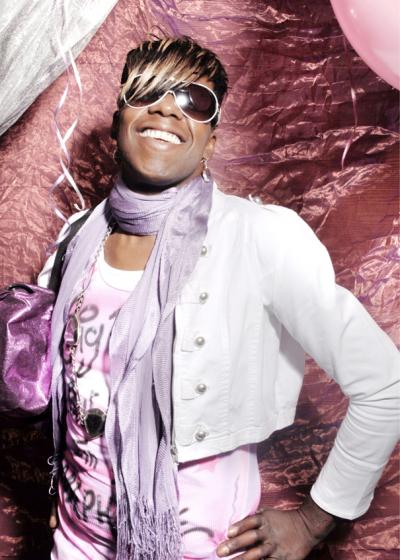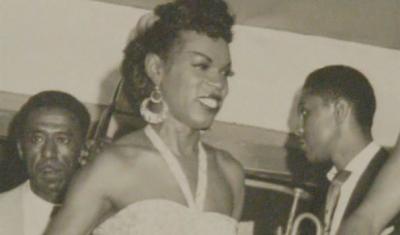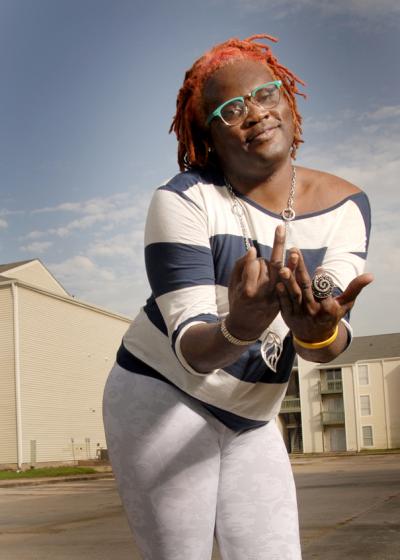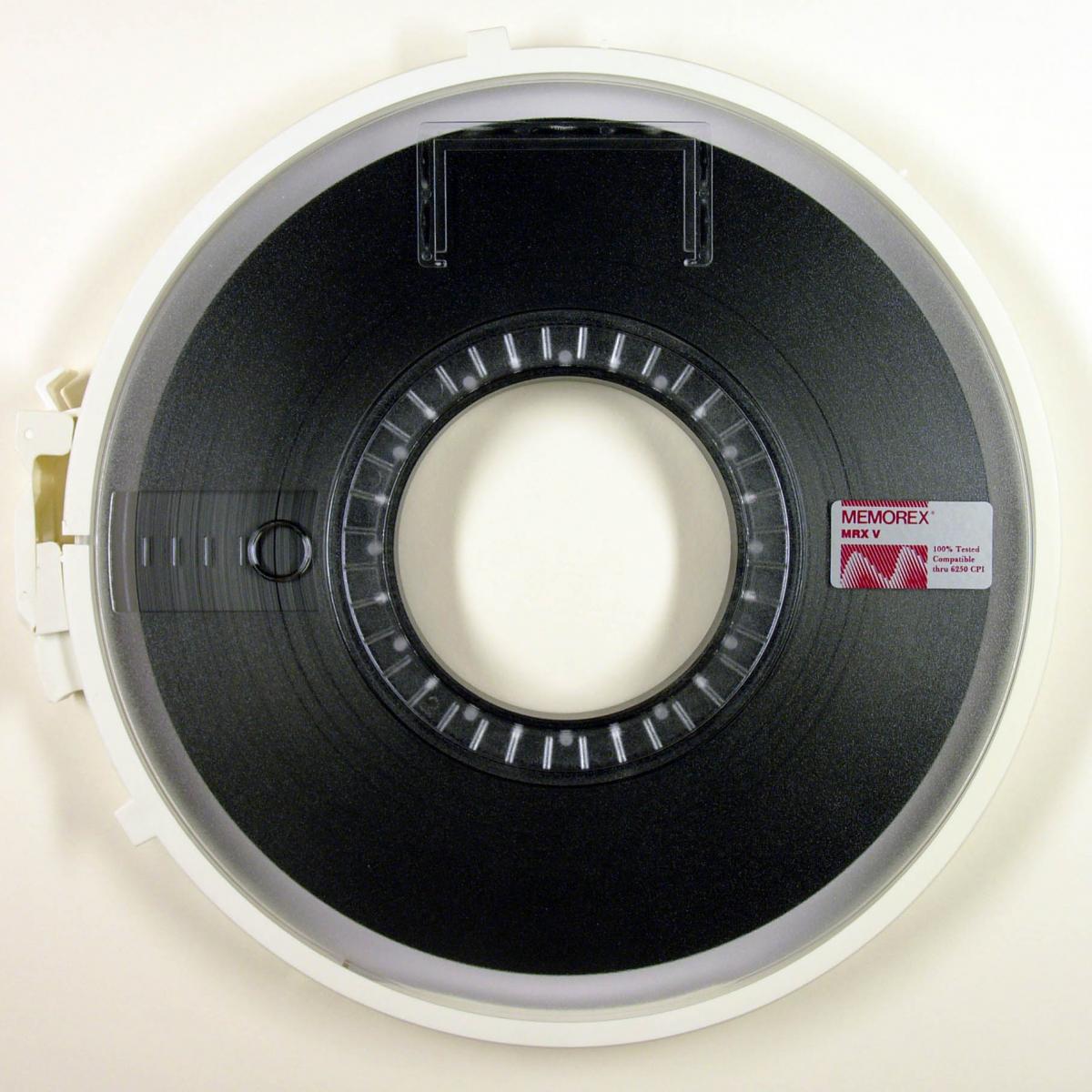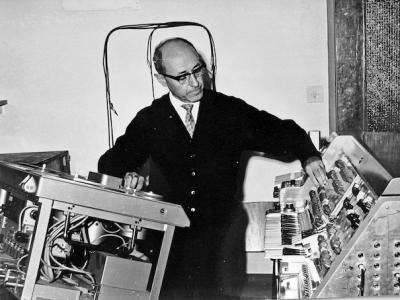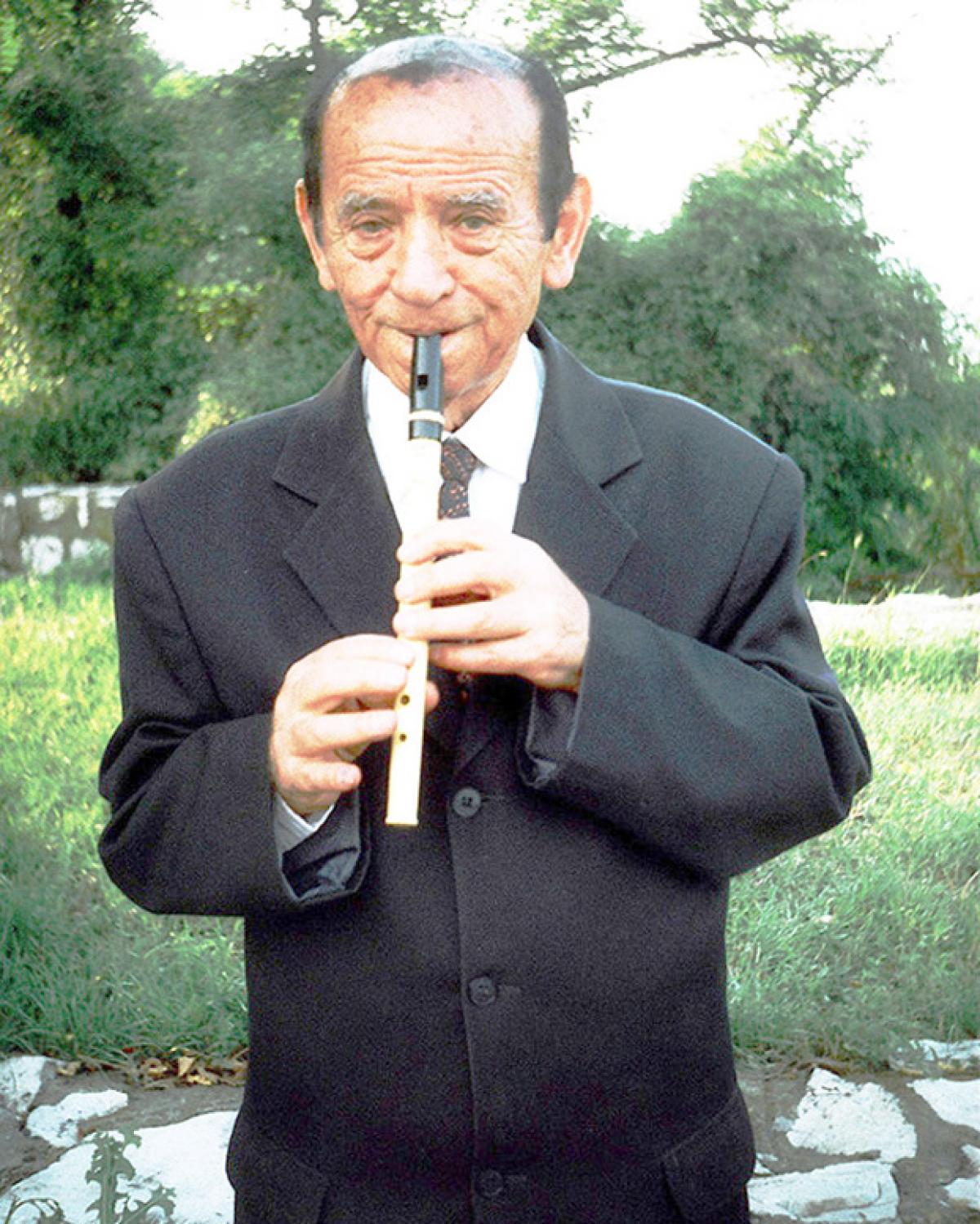
Travelling Concepts in Balkan Electronic Dance Music
Popular electronic dance music is to such an extent a powerful genre that it can use various ideas from completely different repertoires. New tendencies in EDM separate the travelling of popular, jazz, blues, and even elements of classical music in the electronic sound with the aim of creating a new authenticity, while the emphasis is on the context and experience of performance. Besides, these boundaries are still moving. By means of the song «Raise Up Your Hand» composed and performed by the Macedonian electronic musician Kiril Džajkovski this article will discuss the way in which the use of traditional Roma music in a free treatment, genre of electronic dance music continues to grow and develop.
In recent times examples of interaction between different musical languages and styles seem to be more frequent and familiar, and new genres continue to appear through the endless Universe of music. Mainly, musical and artistic mixtures have experienced a re-birth of interest and have been constantly rising within contemporary societies. The prefix «re» affirms and approves the pre-existing discursive field, the repetition within the performative present. If we take just a quick close-up view at a large field of popular music, as well as at various fusions of art/folk/or popular music based on the Western/non-Western model, we will doubtlessly discover a lot of examples which show that the new generation of performers/musicians/artists tend to stress and concentrate on multiculturalism aiming to coexist in a world that is transforming itself (and has been transformed) into a (global) village, according to Marshall McLuhan (McLuhan 1967).
On the other hand, Mieke Bal’s idea of travelling concepts between disciplines, individual scholars, historical periods, and geographically dispersed academic communities (Bal 2001), could be fruitfully placed into the field of music aiming to connect various culturally determined music(s) and styles, historical contexts in which they appear, and their central protagonists: performers and audience. The main desire would be to create new sound spaces and set the base for thinking about the musical performance(s) as experience(s) (Clayton 2008). In this sense experience, according to Victor Turner, becomes a concept which represents itself by travelling and researching the self or the Other (Turner 1982).
Looking through these perspectives, popular electronic dance music demonstrates that this genre is also to such an extent powerful that it can use various elements and ideas from completely different repertoires, times and contexts. Also, new tendencies in electronic dance music separate travelling concepts: the transposition of popular, jazz, blues, and even elements of classical and traditional music(s) in the electronic sound and environment with an intuitive desire to create a new authenticity, while the emphasis is on the context and experience of performance. Thus Marvin Carlson, focusing on the field of theatre and performance studies, stresses: «The present experience is always ghosted by previous experience and associations while these ghosts are simultaneously shifted and modified by the processes of recycling and recollection» (Carlson 2003: 2). Following Carlson’s thought the memory is recalled in new circumstances and contexts.
By the time I was working on a virtual field research attempting to find representative examples and necessary details for my PhD project (based on electronic dance music in the Balkans), I accidentally found an official video of the song «Raise Up Your Hand» on Youtube. The first reaction I had was of surprise, and my «horizon of expectations» was immediately enlarged. I was amazed by the way different and contrasting musical worlds could be linked and shaped: electronic dance music as a basis, African MC singing style, sound of traditional brass band of the Balkans, Roma singer… This sounds consistent, multilayered, as it has always existed like that. Nevertheless, soon after that, I noticed that there is something in question which at first resists clear definition, as well as rigid observation from one perspective or discipline. Even though I had already been familiar with Kiril Džajkovski’s opus, I was intrigued for the first time by the ideas about the creation of the new sound spaces of the Balkans, as well as by the fact of understanding their importance in a contemporary moment. Therefore I bravely came into the field of performance studies aiming to upgrade my previous knowledge based in (traditional) ethnomusicology, and assaying some of the various questions and ideas that are related to connections between, for example, Past and Present, National and Trans-national, but also to think how popular electronic dance music could be perceived as a stage event. As Carlson asserts: «This process of using the memory of previous encounters to understand and interpret encounters with the new and somewhat different, but apparently similar phenomena is fundamental to human cognition in general, and it plays a major role in the theatre, as it does in all the arts» (Carlson 2003: 6).
As the days passed by, I caught myself listening to the song over and over again, thinking and trying to understand it from various sides. I’ve been haunted by the song. «Raise Up Your Hand» became my earworm, which Steve Goodman describes as the catchy tune that you can't get out of your head, the vocal refrain, the infectious rhythm or the addictive brass band sound, which becomes «one of the new species of earworms that travel at different speeds through the epidemological field of sonic culture» (Goodman 2008: 32, 33).

Raise Up Your Hand, Free Your Bodies, Hear and Feel the Sound and Rhythm of the Balkans!
Composed and performed by Kiril Džajkovski, the single «Raise Up Your Hand» was premiered at the MTV (Balkan region) on January 11th 2010. As an internationally acclaimed DJ, musician and composer whose main focus is on theatre, film and documentaries, Kiril is also a pioneer in musical combinations which can be classified in the developing genre of Balkan electronic. A native Macedonian, from childhood he came into contact with musical varieties of the Balkan. He points out: «I treat traditional music freely. Therefore in my work every connection between electronic and traditional music becomes an experiment which helps me to perceive what I could do with the basic, inspirational idea. It is not some rigid theory, nor way of doing or assembling things in music. I do it very spontaneously and, to be honest, intuitively.»1 Kiril’s words highlight how this artist sees and views his own cultural soundscape.
The Republic of Macedonia is one of the powerhouses of this East European region, with vivacious sounds and tricky rhythms coming from a prodigious mix of nationalities and their (musical) histories and traditions: Macedonians, Albanians, Serbs, Turks, Cincars (Vlachs), Greeks, and a significant number of Roma people (Romani or Gypses).2 Certainly, the mix finds its reflection in the musical landscape of Macedonia. Actually, as Andrew Baruch Wachtel observes: «The Balkans is a borderland where four of the world’s great civilizations overlapped to produce a dynamic, sometimes combustible, multilayered local civilization. Here the cultures of ancient Greece and Rome, Byzantium, Ottoman Türkiye, and Roman Catholic Europe met, clashed, and sometimes merged – a land that no single culture was ever able to dominate completely.» (Wachtel 2008: 1) However, being one of the most complex regions, the Balkans has a history of creative borrowing by local people from the various civilizations that came into contact.
The song «Raise Up Your Hand» was inspired by Esma Redžepova, Macedonia’s most celebrated Roma performer. She has a powerful voice and a vast repertoire, and an undoubted passion and ability for singing. She is very well known, not only as a songwriter, but also as a humanitarian. Kiril’s intention was to blend Redžepova’s singing style with the sound of brass band on the bases of electronic music without disturbing their specific type of interpretation. «Not only did I not want to detract anything from the original sound, but also my aim was to give it an absolutely new dimension,» emphasized Kiril.3
This song is also coloured by the sound of the Serdžuk orchestra whose members are at the same time members of the other Roma brass ensemble – Kočani orchestra, a band which was successful beyond the borders of the country. The story of how this instrument, influenced by West European military orchestras, came into the Balkans in the 19th century is fascinating. In 1817, after the end of many centuries of Turkish rule, Serbian prince Miloš Obrenović, a man with a broad range of interests and willing to achieve progress, quickly turned his focus to Europe which not only brought numerous changes in the Serbian middle class, but also to the musical life of the nation. The Princely-Serbian Band (Knjaževsko-serbska banda) had been formed as a European-like brass orchestra lead by Josef Schlesinger. This Czech Jew who had been educated in Germany performed not only military marches with the Band, but also musical mixes based on folk music and Western tradition. It was his achievement that brass players became part of military orchestras (Golemović 1997). The sound of the trumpet, whose primary task was to enhance patriotic feelings, was brought in to the villages by the soldier trumpet players, thus they altered its character (Gojković 1989: 195). Soon after, the sound of the folk trumpet spread to other areas of the Balkans (Macedonia and Bulgaria).4 Now brass bands are an increasing part of the Balkan musical landscape, many of them are Roma, although not exclusively so.5
Video not available anymore.
The Presence of the Past. The Presence of the Distant
Working with the electronic sound that already goes beyond the boundaries of the traditional music, Kiril created this track from the inner society dynamics. In this example influences could be noticed from music originating beyond the country and beyond the electronic dance music genre as well. Initially, he is obviously transposing and upgrading the role of MC from the Reggae genre (and Hip-Hop) to electronic, aiming to give an exciting dynamics to the performance. Generally, keeping the event moving, the MC is performer who usually creates and interprets text of his own, original material, gives additional support to the audience «to go into the rhythm», «to dance with no breaks», as well as «to listen to music».
An internationally acclaimed MC and singer, Ras Tweed’s rhythmic expression makes him a very special artist, able to interpret any genre, always adding unique elements of performance, which positioned him to go one step beyond typical MC interpretation. The song «Raise Up Your Hand» is also colored by the sound of traditional pop instruments (electric guitar, violin, drums and keyboard) and interpreted by representative musicians of the local community.6 This shows a successful connection between professional musicians and interpreters of traditional music.
As an example of intermusicality,7 the song «Raise Up Your Hand» presents several important features. Firstly, an aspect inspired by pre-existing music based on elements of local identity (Roma vocal and instrumental brass music and their style of performing and improvisation). Secondly, an aspect related to the creativity and influence of music from outside the culture (MC’s act of performing). Also, it is important to stress elements bearing reference to the world outside of electronic dance music and DJ culture (instruments, themes and improvisations interpreted live with no samples by electric violin and guitar, drums, as well as keyboards).
From the textual aspect which is skillfully incorporated into rhythm and four on the floor meter, typical for the electronic dance music genre, using the elements of a local Reggae slang, MC Ras Tweed narrates a story about the magical power of Balkan music and dance which should remove all differences between people and blur boundaries within the binary framework: Major/Minor Communities, Black/White, Urban/Rural, Traditional/Popular, Local/Global:
Now we come together like a stamp on a letter,
the music we bringing making things get better.
So, raise up your hand,
if you love this ya one
it have style n pattern.
I say, raise up your hand
if you love this ya one,
cause it have style n pattern. (refrain)
No stress as you lift up your hand n your foot,
you don’t give a damn if persons a look,
cause you rock n you dip n whine n go down.
Cause this is the beat thats he talk of the town
whine up your hips n don’t bother shy.
raise up your head n look to the sky.
Cause this a the beat thats hot pon the street.
The sound of the Balkans it deh pon da street.
(refrain)
Dance dem, dance pon the Balkan street,
where the weather so hot n the music so sweet,
sweet sweet this be Is My life
check for this music each day n night.
Cause ready me, ready you better hold on steady
Macedonian beat it so hot n ready.
Ready me, ready you better hold on steady this is Kiril n the Ras…
(refrain)
Ushten, sarinen
amenca khelen.
Akava nevo hiti
tumen gilaven…
Using a metaphor, «a stamp on a letter», at the beginning of the song, Tweed alludes to contemporary culture where accelerated information flows and fast communications are parallel to rapid technological development. Tweed’s narration is intensified by verses from the end segment, and interpreted by Esma Redžepova in Roma language: «Ušten, sarinen, amenca khelen, A-kava nevo hiti, tumen gilaven» (transl. «Stand up all together, let’s dance, let’s sing this new hit»). Exactly in this segment we can notice two voices that indicate the possibility of cross-cultural communication, which leads to the hypothesis that cultures have always been transformed because they have constantly been in a kind of interaction. Seen through the theoretical eyes of Mieke Bal: culture is not object-based but performative (Bal 2001).
Formal musical structure distinguishes 5 segments at macro level (A, A1, A2, B, A1/2) and 14 microsegments in which the most important contrast of musical flow has been carried out. It is evident that Kiril was playing with musical material from the refrain; he was using combinations with or without the brass band, but the contrast is also apparent in the dynamic plan of the song. Namely, exposure of strophas is followed by the reduced intensity of sound, in order to intensify it in the refrains and reach the peak in the final segment of the song. This precisely presents how Kiril expresses himself using particular melodies, harmonies, rhythm and virtuosic DJ tecniques.
The Beat of The Video
Changes at the musical level have been followed by visual segments of the official video. Walking through the old cobble and a view from a bird’s perspective (segment A: duration from 00.00 till 00.54), the camera alludes to something that is moving, traveling, as well as connecting to old and Past. A brass band is placed in the Dark, in black-and-white technique, as opposed to open space, slightly indicating (with a kind of jazzy movements) a travel of brass tradition from one context to another: from West European artistic tradition to East European tradition of new folk music. The movements of MC (segment A1: 00.54-01.32) refer to the body emancipation and investigation also drawing the attention of the spectators. Performing in front of a building under construction, MC is making a reference to the Balkans: a space that renews itself over and over and goes to further phases of its development. It is a region which is, actually, understood as a product of complex interaction of various voices, historical periods, traditions and heritages (Todorova 2009).

The next segment (A2: 01.32-02.11) brings the spectator to the space of real, everyday life of Roma community in the Balkans, marking stereotypical elements, such as: an open market, an old car, an unfinished house, animals moving freely down the street, etc. These images are, in fact, emphasized by the desire of the author to give more attention to the music and culture of minority communities of the Balkan, and also to focus on the creative potential of this nomadic people cultivated and developed for centuries. The appearance of the author (Kiril as a cameraman!) in the background of the story opens another level of questions such as: how the local Roma community perceives a man of the Future, as well as who has recorded the Author and how this has been done.

The next segment which follows (B: 02.11-02.41) brings the diva of Roma music at the bridge, a symbol of where, metaphorically, East and West had been connected. This, again, refers to the Past, to the Balkan and its border position, or territory of contention between Christianized Europe and the Ottoman Empire, between two continents: Europe and Asia. As Andrew Baruch Wachtel notices: «After the fall of Byzantine in 1453, the line of separation between the Muslim Ottoman Empire and Christian Western Europe would cut across the Balkans, as would, in the twentieth century, the southern divide between communist Eastern Europe and the West» (Wachtel 2008: 3). In the study Imagining the Balkans Maria Todorova highlights: «In such places it is possible to live both in and beyond the West, knowing the boundaries of its language, and looking southward or eastward as toward regions of the unthought» (Todorova 2009: ix).
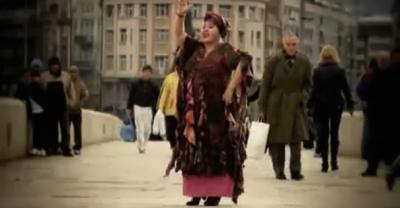
The end segment (A1/2: 02.41-03.13), based on refrain repetition central to the musical experience, highlights that music is related to the events outside itself, and the focus is on the performing in the non-media sphere, where the performing audience, through the dance movements, free their bodies and spirits, recognizing and feeling Balkan elements in the sound creation.
Performing Live: the Future is Already Here
Aiming his work as an author who expresses himself, but also through the use of DJ techniques, Kiril Džajkovski presents his performance as a project, which is verified by the fact, that next to him, accompanying musicians are at the same time performers. Instead of a communication model between idea – DJ – music – audience – and feedback reactions from the audience, through the example of the song «Raise Up Your Hand», the picture gains multiple layers. All performers communicate with the author (Kiril has the roles of a DJ, conductor, laptop and keyboard player), also among themselves and get feedbacks.
During live performances Kiril often spreads a performing apparatus adding drums, accordion (an instrument which is also a part of new traditional music in the Balkan),8 as well as other MCs (e.g. TK Wonder and Ghetto Priest). According to Marvin Carlson, performance however highly controlled and codified, is never exactly repetable, but rather depends on the shifting context (Carlson 2003: 4). By the act of putting musicians from various genres on the stage, Kiril, metaphorically speaking, transforms them into a single performing body capable of receiving, storing and transmitting acoustic memory information. The next important elements of live performance(s) are graphical visualizations and stroboscopic effects which are closely rhythmically coordinated with the music, which highlights that between music and visuals, a close intermusical relationship has been made.

Conclusion
Through this performing apparatus where electronic beat is a main impulse and brass band sound is very well territorialy recognised, Kiril Džajkovski organically connects different styles and manages to colour the club energy of electronic dance music with the excitement of a live (pop/rock) band performance. In and with the song Raise Up Your Hand he showed how the genre of electronic dance music continues growing, developing, exceeds and goes beyond a period of its deep attachment to DJ tools. Looking through these lenses, it could be said that he is going to another, higher level(s) aiming to make a particular musical performing organism as well as to shape and mark new sound spaces of the Balkans.
- 1. Taken from the interview which I conducted with Kiril Džajkovski on August 3rd 2011 in Belgrade.
- 2. As Kim Burton explains: «Sometimes known as Vardar Macedonia, after the river that runs from north to south, the Republic is, in fact, a part of a much larger area that bore the name Macedonia during the Ottoman occupation, which was divided between Serbia, Bulgaria and Greece by the 1913 Treaty of Bucharest. To the south, it is bordered by Aegean Macedonia (part of Greece), and to the east by the Bulgarian territory of Pirin Macedonia… Around 65 percent of the populations however are of Slav ‘Macedonian’ group: a people only recognized after World War II when the new Yugoslav Communist government created a Macedonian Republic, declared that its language was separate and distinct, and decreed a Macedonian nationality» (Burton 2000).
- 3. Based on the aforementioned interview.
- 4. Serbian film director Emir Kusturica is one of the most important figures for the Balkan brass bands representation worldwide. Namely, using the sound and performance of Balkan brass bands in some of his famous films (e.g. Underground), Kusturica actually highlighted the existence of such an interesting musical tradition.
- 5. The greatest progress in brass music has been achieved by the Brass Festival in Dragačevo (Guča) which was founded in 1961 as a contest of village orchestras.
- 6. Vladimir Krstev, violin, and Aleksandar Hristov, guitar, are members of the Macedonian Philharmonic; Goce Stevkovski, percussion, is a member of the Macedonian Opera and Ballet, and Dino Milosavljević, drums, is one of the best percussionists in the Balkans who performed with the famous pop artists (e.g. Vlatko Stefanovski, Theodosii Spassov, Vasil Hadžimanov, etc).
- 7. The main idea of intermusicality (which alludes to the poststructuralist idea of intertextuality) highlights that music is always more than music (Monson 1996). It reacts to other music(s), incorporates, transforms, and gives them other meanings. Music is always in a relationship with the concept music. It exists through the relationship with other music(s) (recording, score, live performance, etc.) as well as with other (artistic) texts that are operative in a spatial and temporal field (Šuvaković 1997).
- 8. Actually, accordion replaced the old bagpipe tradition. For more information consult Rastko Jakovljević’s study Marginality and Cultural Identities: Locating the Bagpipe Music of Serbia (Jakovljević 2012).
List of References
Biography
Published on November 26, 2012
Last updated on May 01, 2024
Topics
Does the global appropriation of kuduro exploit or reshape the identity of Angolans? How are «local» music genres like guayla sustained outside of Eritrea?
About Indian musicians in German pedestrian zones and the relationshis of music and place in academic research.
What happens, when artists move from one to another country? For example, when an Arab artist replaces the big tractors in her the village with big jeeps of the West.

